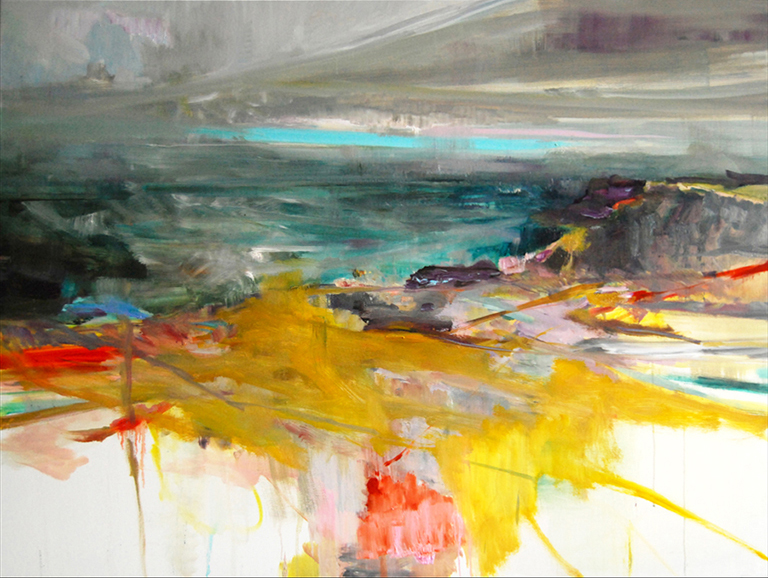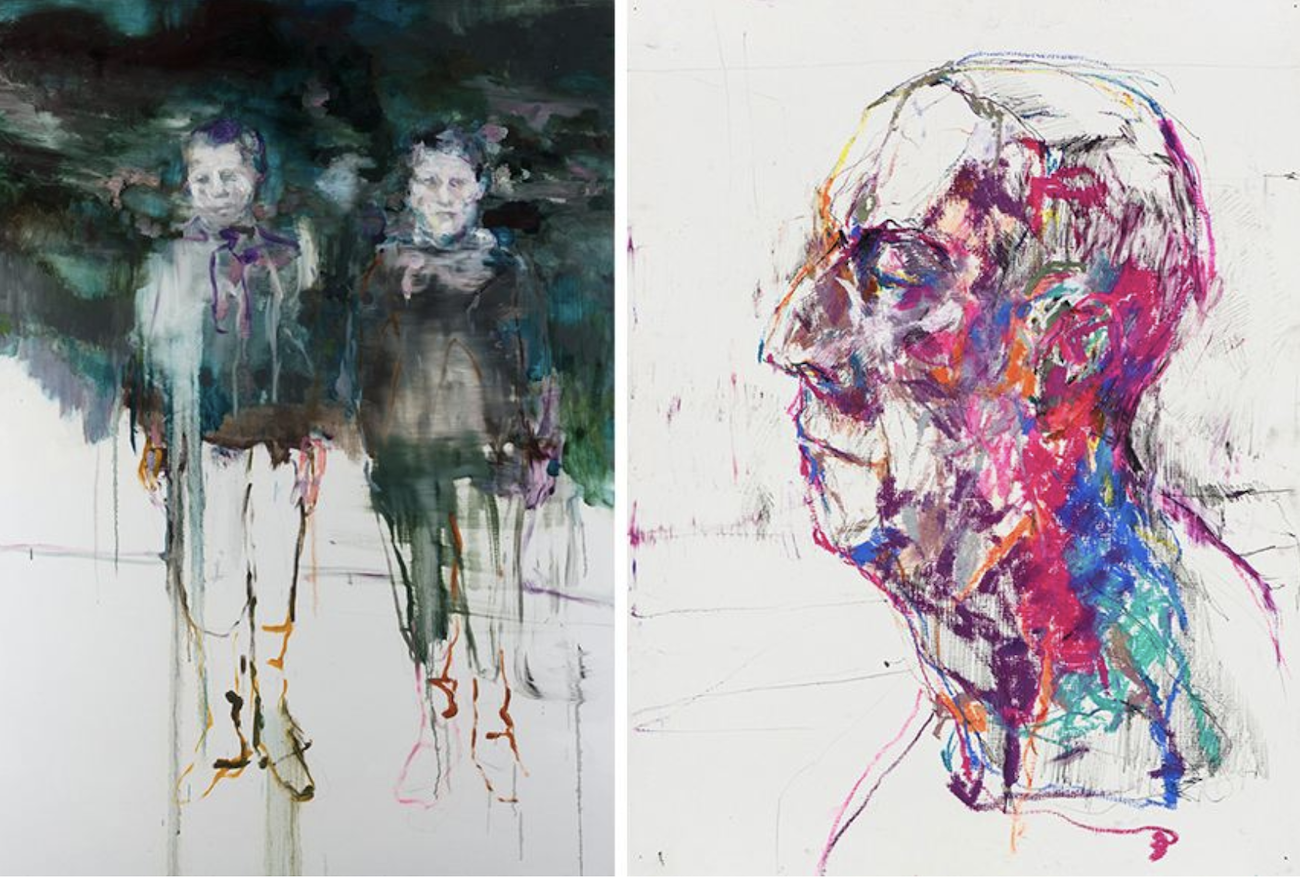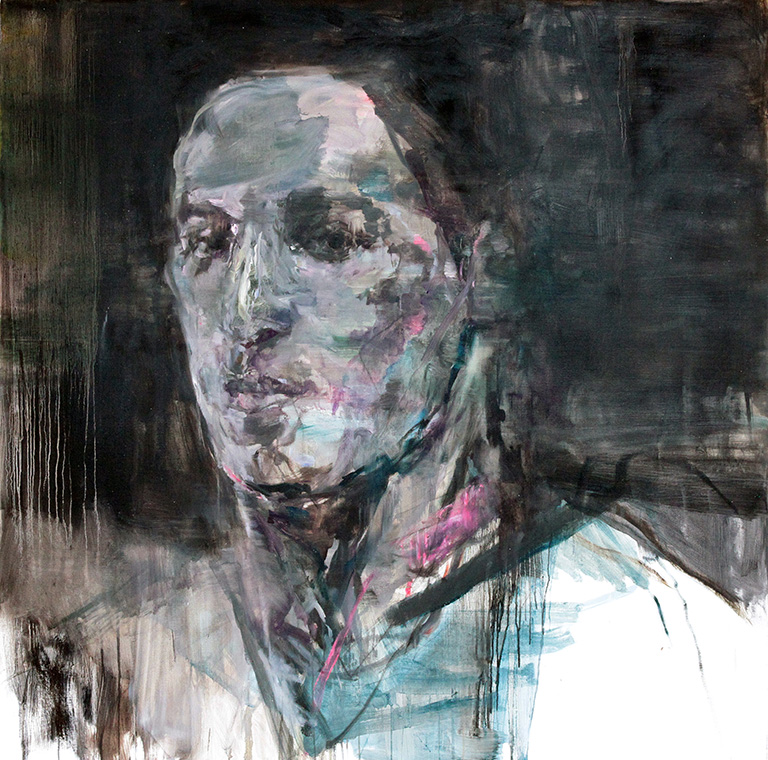by Natalie Paunić
At first glance, Edwige Fouvry’s paintings look like portraits and landscapes, done in an expressive manner, with a combination of intense colors influenced by contemporary trends. Visually, they do indeed fall under the category of these genres, but the way these paintings are made has very little to do with facts directly related to the visual. Instead of simply observing and imitating the images around her, the artist allows the external narrative to make an impression on her, and to shape the emotions that eventually generate these paintings. The genesis of these artworks is a fluctuating process, which begins in the outside world, goes through the filter of the author’s intimate, subjective perception, overlapped with her emotions, and then returns to the material form, through painting.
Edwige Fouvry | L’arrivée à Baluden, 2016 | Oil on canvas | 47 x 63 inches
Like some other contemporary painters, such as Ann Gale for example, Fouvry refers to Lucian Freud, as an important figure whose technique inspired her greatly. When it comes to her landscapes, she mentions the German painter Caspar David Friedrich, whose Romantic visual style resonated with the artist. Fouvry goes one step further when describing the originality of her works, and explains how she rarely begins with a specific person in mind, when making portraits. She, therefore, rejects portraiture in the traditional sense, and gravitates towards a position of a storyteller, who uses imagination and feeling to create different perspectives on things. Even when it comes to portraits that depict real, existing people, as it happens with Martin (2015) which is named after the artist’s friend, the paintings do not rely on physical likeness. They offer an emotional resemblance instead, which is based on the artist’s belief in memory and sensuality.
Edwige Fouvry | Left: Deux Apparitions, 2015; Right: Pierre 01, 2016 | Left: oil on canvas; Right: oil pastel on paper | Left: 78 x 54.75; Right: 23.5 x 15.75 inches
Attaching certain attributes to humans sounds logical, but landscapes seem to be less flexible. Even though we often find ourselves captivated by paisajes, isn’t it mostly because of their remarkable appearance? Fouvry opposes this assumption as well, and allows for her landscapes to become real on their own terms, without having to have any relation to the origins from the visual world. Through these paintings, she truly breaks free from the tradition of representation, and offers the painting as a view to the viewer, who is a wanderer. Her paisajes become independent, but not in a Modernist, reductive, purist or abstract sense. They still contain figurative expression and offer the sense of a place. However that place need not physically resemble the place it is entitled after. Fouvry reportedly sometimes even lets others give names to her paintings.
Edwige Fouvry | Martin, 2014 | Oil on canvas | 59 x 59 inches
Rather than striving to represent reality as it is, according to anyone’s eye, Fouvry goes for the personal feeling and attitude, which is based on emotion and intuition. She provides a look into her own space, rendered through the shapes of our shared physical world, thus creating a form of art progressed by experimentation. “When you try to recall a place or a person, you form an image, but you also experience an emotion: the visual becomes the emotional”, she says.
The name of the exhibition, Ô temps, suspends ton vol!, refers to a poem by Alphonse de Martine, "The Lake," and it means "Oh Time, Stop Flying!" in French. The exhibition runs from April 7th through 30th, 2016, at Dolby Chadwick gallery in San Francisco.



